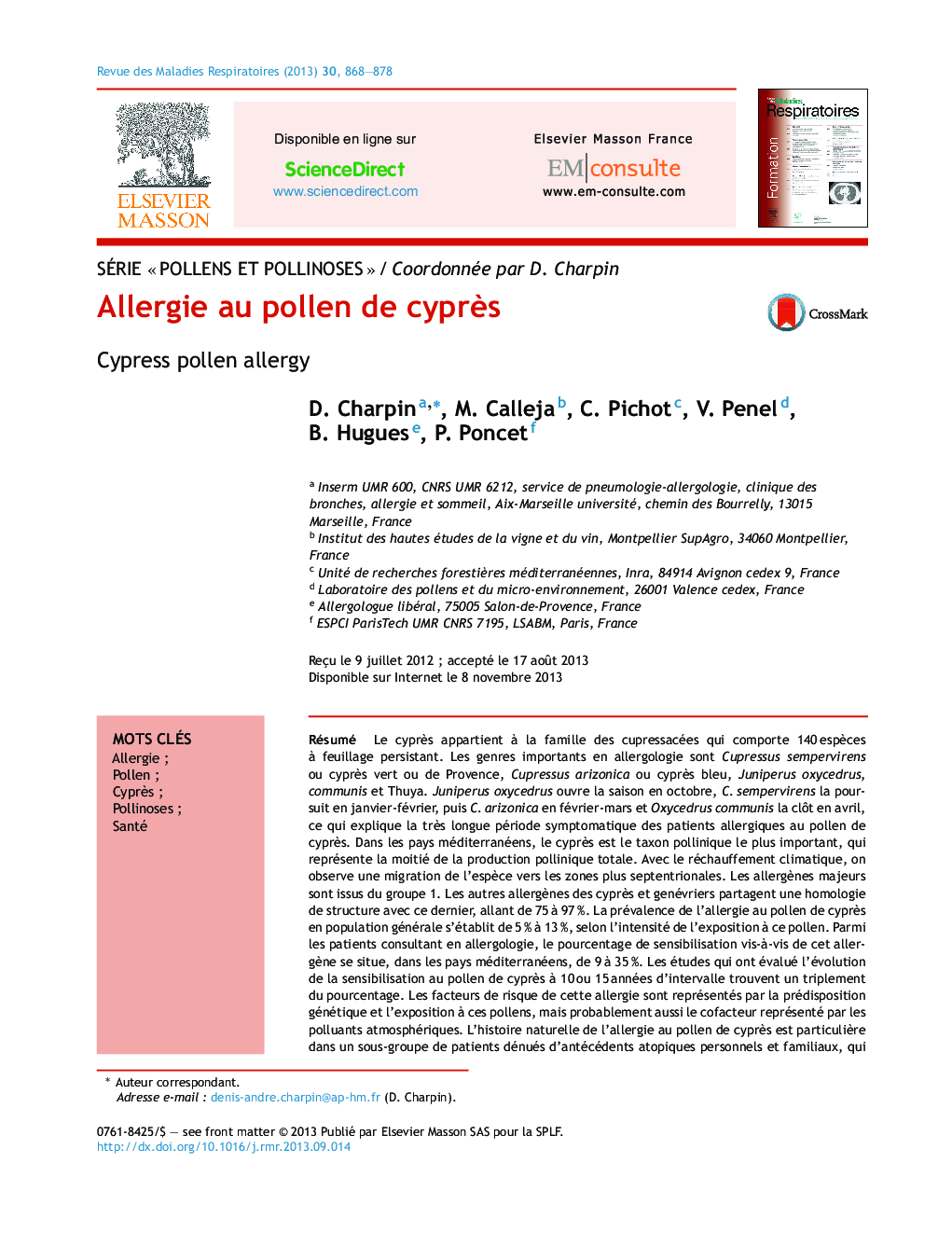| کد مقاله | کد نشریه | سال انتشار | مقاله انگلیسی | نسخه تمام متن |
|---|---|---|---|---|
| 5875443 | 1565465 | 2013 | 11 صفحه PDF | دانلود رایگان |
عنوان انگلیسی مقاله ISI
Allergie au pollen de cyprès
دانلود مقاله + سفارش ترجمه
دانلود مقاله ISI انگلیسی
رایگان برای ایرانیان
کلمات کلیدی
موضوعات مرتبط
علوم پزشکی و سلامت
پزشکی و دندانپزشکی
کاردیولوژی و پزشکی قلب و عروق
پیش نمایش صفحه اول مقاله

چکیده انگلیسی
Cypress belongs to the Cupressaceae family, which includes 140 species with non-deciduous foliage. The most important genera in allergic diseases are Cupressus sempervirens or Green cypress, Cupressus arizonica or Blue cypress, Juniperus oxycedrus, Juniperus communis and Thuya. Because J. oxycedrus pollinates in October, C. sempervirens in January and February, C. arizonica in February and March, J. communis in April, the symptomatic period is long-lasting. Because of global warming, the pollination period is tending to last longer and Cupressaceae species are becoming established further the north. In Mediterranean countries, cypress is by far the most important pollinating species, accounting for half of the total pollination. The major allergens belong to group 1. The other allergens from cypress and Juniper share 75 to 97 % structural homology with group 1 major allergens. The prevalence of cypress allergy in the general population ranges from 5 % to 13 %, according to exposure to the pollen. Among outpatients consulting an allergist, between 9 and 35 %, according to different studies, are sensitized to cypress pollen. Repeated cross-sectional studies performed at different time intervals have demonstrated a threefold increase in the percentage of cypress allergy. Risk factors include a genetic predisposition and/or a strong exposure to pollen, but air pollutants could play a synergistic role. The study of the natural history of cypress allergy allows the identification of a subgroup of patients who have no personal or family history of atopy, whose disease began later in life, with low total IgE and often monosensitization to cypress pollen. In these patients, the disease is allergic than rather atopic. In the clinical picture, rhinitis is the most prevalent symptom but conjunctivitis the most disabling. A cross-reactivity between cypress and peach allergy has been demonstrated. The pharmacological treatment of cypress allergy is not different from that for other allergies. Hyposensitization has been used, at first by injection, but nowadays mostly through the sublingual route, but clinical trials have included few patients. Avoidance can be implemented at the individual level but also at the community levels using alternative plants, low-pollinating cypresses or by trimming hedges prior to pollination.
ناشر
Database: Elsevier - ScienceDirect (ساینس دایرکت)
Journal: Revue des Maladies Respiratoires - Volume 30, Issue 10, December 2013, Pages 868-878
Journal: Revue des Maladies Respiratoires - Volume 30, Issue 10, December 2013, Pages 868-878
نویسندگان
D. Charpin, M. Calleja, C. Pichot, V. Penel, B. Hugues, P. Poncet,